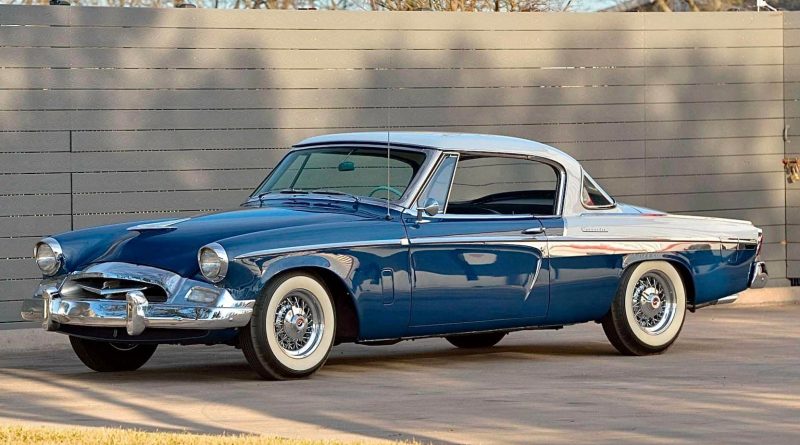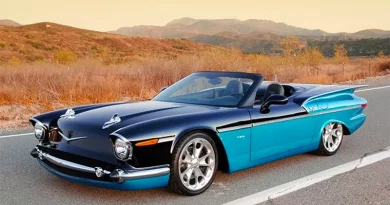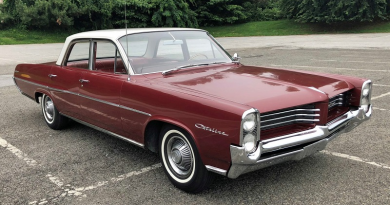1955 Studebaker Commander
The Studebaker Commander is the model name of several automobiles produced by the Studebaker Corporation of South Bend, Indiana (United States) and Studebaker of Canada Ltd of Walkerville and, later, Hamilton, Ontario (Canada). Studebaker began using the Commander name in 1927 and continued to use it until 1964, with the exception of 1936 and 1959-63. The name was applied to various products in the company’s line-up from year to year. The Commander was the company’s mainstream product, the Studebaker Champion was the junior model, and other models were short lived or renamed as market conditions required.
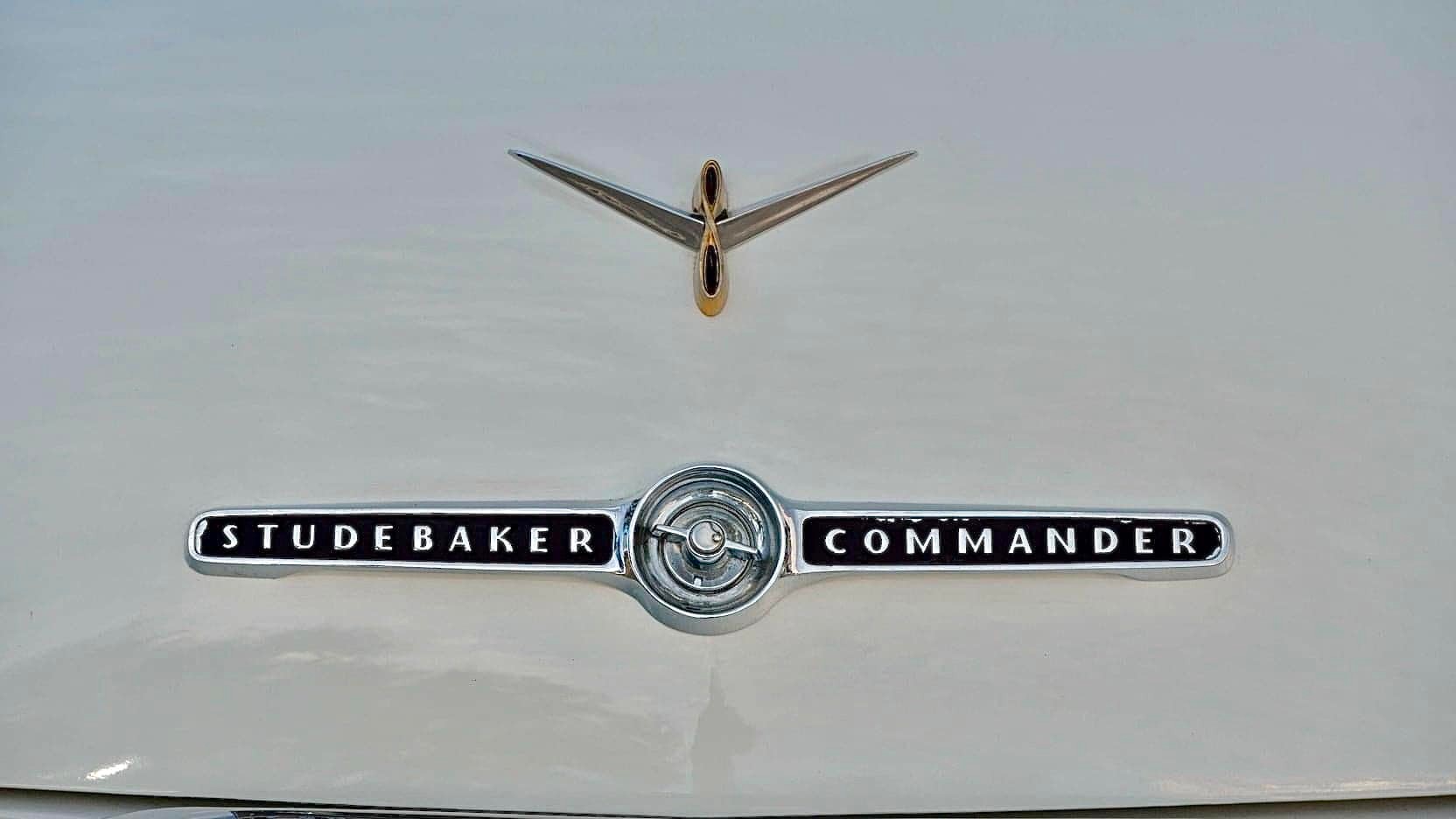
This 1955 Studebaker Commander is different by design. Sleek, sporty, and low slung, the Studebaker Commander is the visual antithesis of so many US cars of the era. US cars in the thirties increasingly focused on aerodynamics, but after the war, the infatuation shifted to power. As V8 engines grew steadily more powerful and gas prices continued to fall, the public was less concerned about cheating the wind with jelly bean pods, so various bricks appeared.
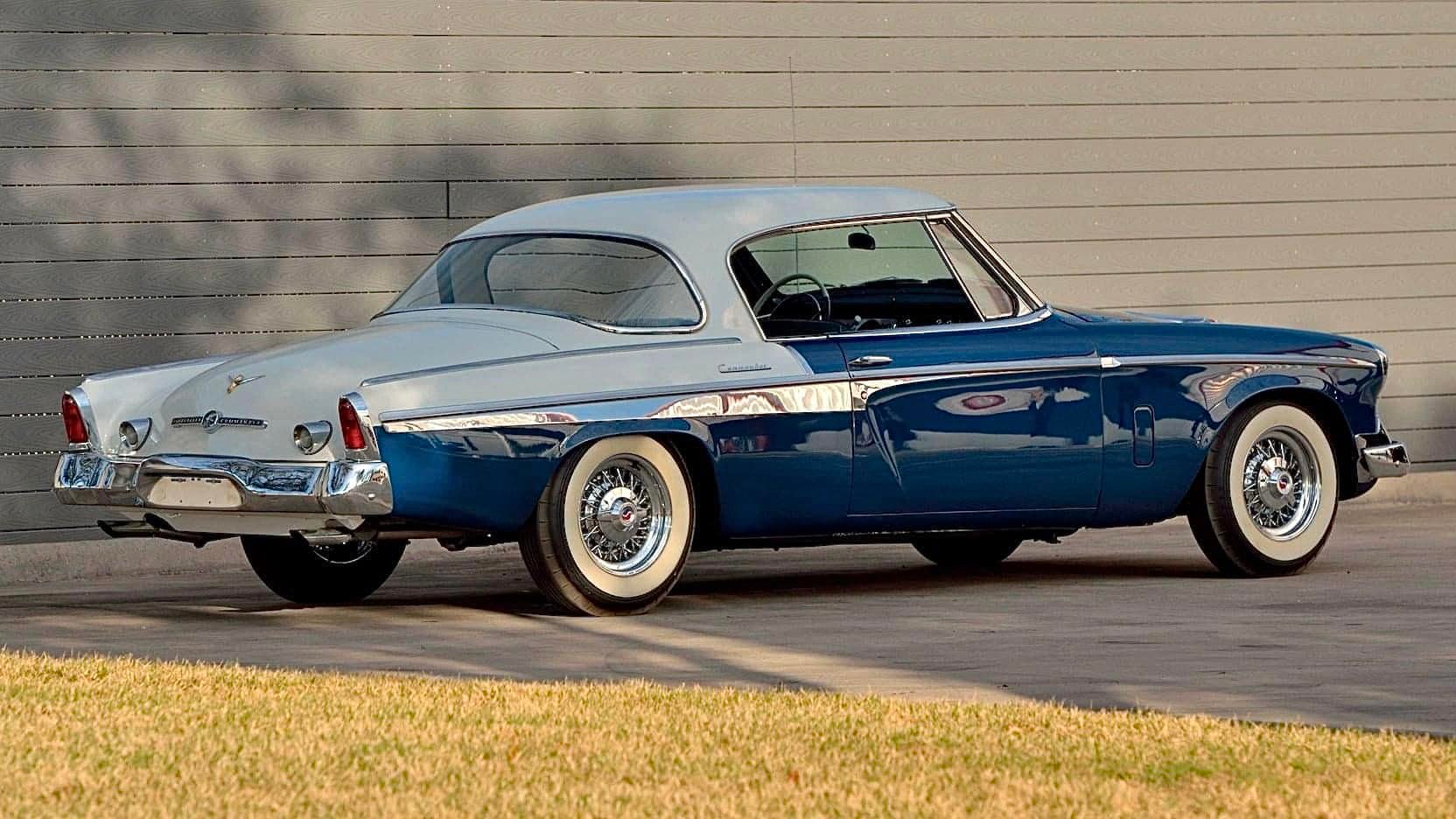
Aerodynamics continued to play a role in European car design, however, and by the mid-fifties, the differences across the pond were dramatic. Enter the Studebaker Commander, legitimately able to claim a “European” look. The design made no compromises with power, either, as the 259ci V8 “Bearcat” engine was good for 162hp.

Designer Raymond Loewy and Robert Bourke worked together to create a sleek, low-slung vehicle that would look like nothing coming out of Detroit. Shown as a coupe and sedan, Studebaker immediately adopted the design and predicted the sedan would take 75% of the sales while the coupe would absorb 25%. Interestingly, the coupe was meant as more of a styling exercise for a potential concept car of the future, but Studebaker’s board wanted both. The new Studebaker would stun the market with its smaller design, rakish lines and clean overall look. Sadly, it wouldn’t sell as well as the company had hoped for a variety of reasons, and the coupe outsold the sedan, creating production problems and slowing public confidence even more. For 1955, the company went all out with a restyled front end, new paint options and more brightwork to better compete against the likes of the Big Three and their seeming obsession with chrome.


Studebaker was one of the very first to market with a brand-new car after World War II, which sent shockwaves through the American auto industry, making even the Big Three scramble to lead the pack. But, having barely survived a bankruptcy during the 1930s, Studebaker was acutely aware that it would be extremely hard-pressed to beat the Big Three at sales—as such, the company sought to be an engineering, styling and technology leader. As the 1950s began, Studebaker started falling behind again and needed a smash hit.

